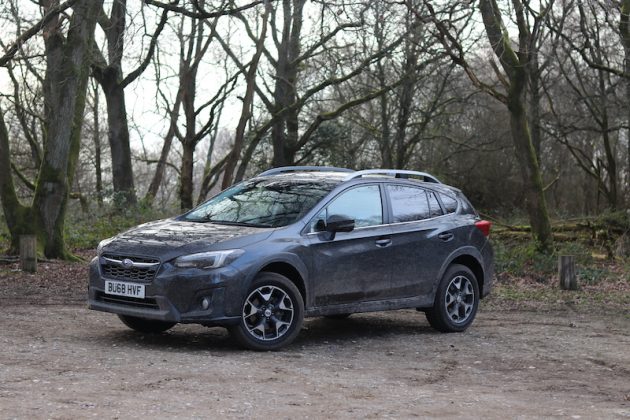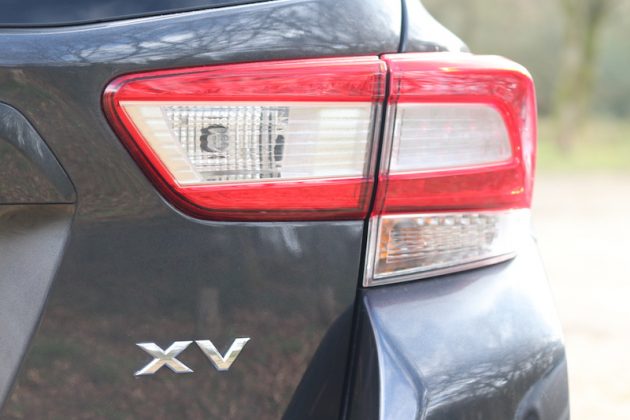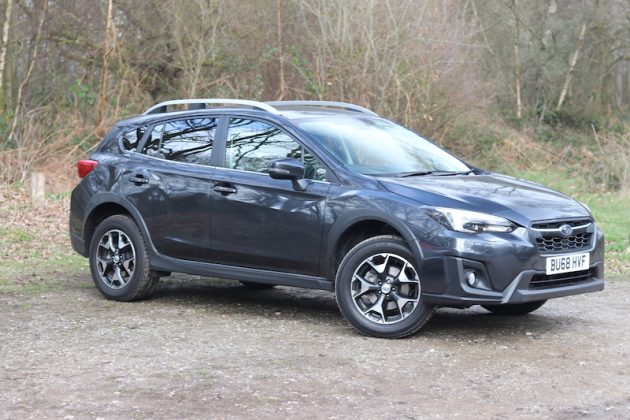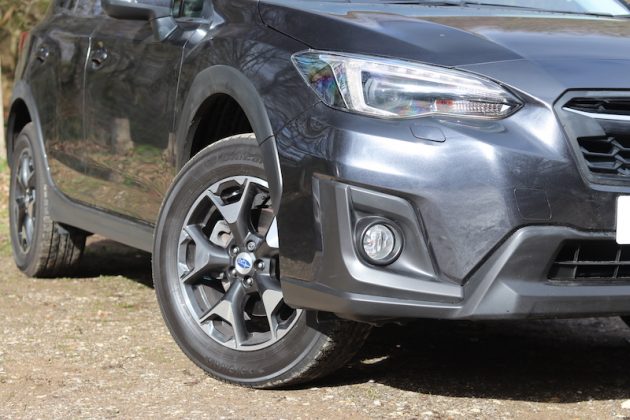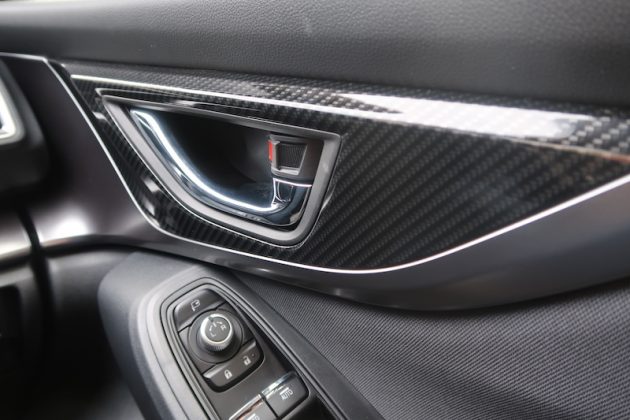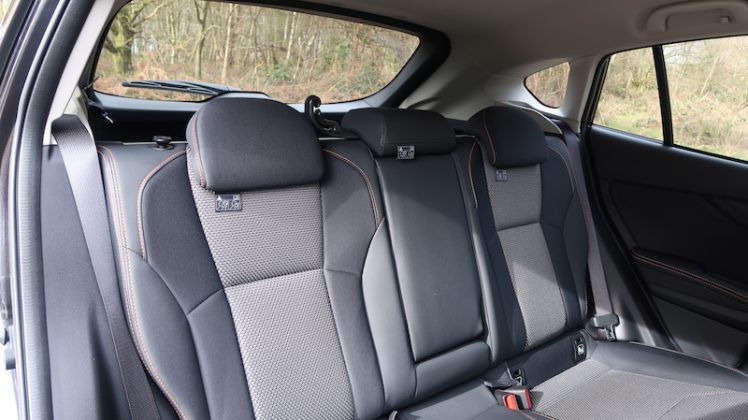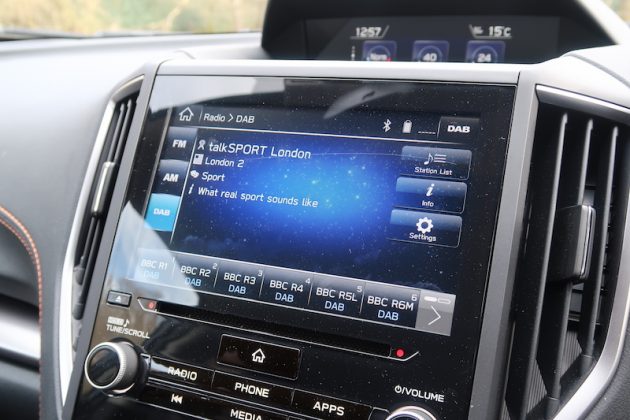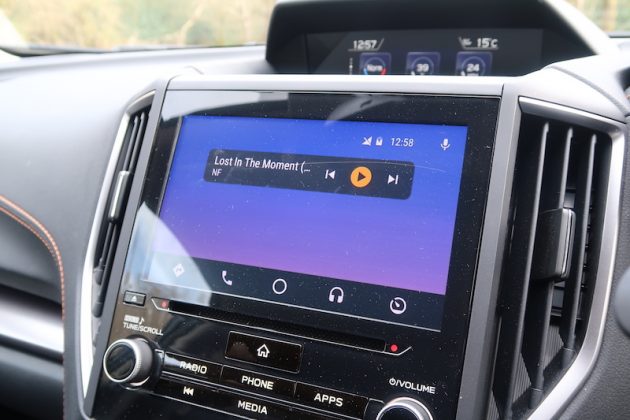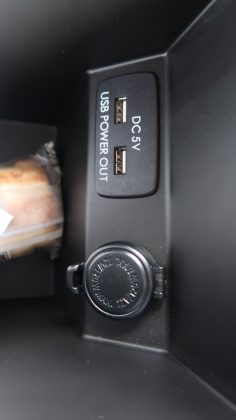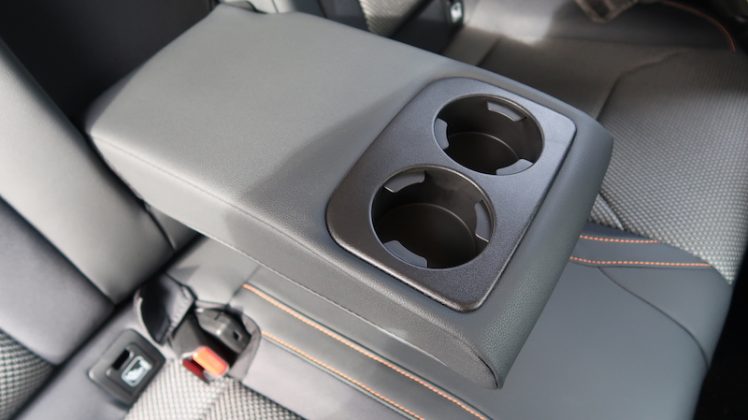Subaru is well known for making rugged, outdoorsy vehicles that are ready to tackle the rough and tumble of the countryside. Therefore, the car in this review should be no different – say hello to the second generation Subaru XV. Is it tough enough to deserve the famous six-star badge, though? Well, to find out, I’m going to do things a bit differently and kick off this review by going off-road.

To help me do this, I have Subaru’s famous symmetrical all wheel drive system, which is always active to give the best traction possible. However, in case that isn’t enough, you have a button marked ‘X-Mode’. This system delivers even more traction by braking wheels that are losing grip, whilst also keeping the gearbox in a low ratio and minimising the amount of throttle that can be applied.

This system can be operated to speed up to 18mph, whilst the hill descent function is operational up to speeds of 12mph. It all sounds pretty promising, but does it actually work? Put simply, yes. The green lane I used may not have been the most extreme trail you’ll ever find, but following lots of rain in the UK, it was rather muddy and rutty. Despite being on standard road tyres, the Subaru felt very capable on the dirty stuff and it inspired plenty of confidence.

What’s helping to provide the power to the XV?
Well, let me talk you through a few specs; under the bonnet I have a naturally aspirated 1.6 litre four cylinder petrol boxer engine, which to be honest, is pretty weedy. That’s because it produces 114hp and just 150Nm of torque, so it’s safe to say this boxer doesn’t deliver a decent punch – see what I did there?

Power is of course mated to all four wheels, via a CVT gearbox Subaru calls Lineartronic. It’s the only gearbox available, so if you want a manual, well, tough luck. As you would expect from the car’s power output, it’s not very nippy, as it takes 13.9 seconds and it tops out at 109mph. However, you don’t really need that much power out on a green lane.

What you do need out there, is a decent amount of ground clearance, which the XV delivers, as it offers 220mm, which is around 40 more than the Suzuki Vitara I took off-road a few weeks back. In case you are wondering, this car is around 2.5cm wider than the Vitara so, it did get a little tight in places. The XV is also around 200kg heavier than the Vitara if such matters concern you.

What I will say, though, is that the XV definitely felt more capable and comfortable than the Vitara, and to be truthful, it felt like it could do more despite the standard-fit rubber on each corner. The X-Mode worked well and the extra ground clearance helps to give more confidence. As I navigated deep, muddy ruts, I could feel the car clawing away for grip, shifting power from wheel to wheel, to help push and pull the car over the slippy terrain.

For those of you looking for a bit more grunt, then fear not, as you can also choose from a 2.0 litre boxer engine which produces 156hp with 196Nm of torque. 0-62 falls down to 10.4 seconds and the top speed increases to 120mph. That too, is mated to symmetrical all wheel drive via a CVT gearbox. However, for the 2.0 litre, you get a paddle shift function that gives you 7 faux gears.
So, the XV shines off-road, but what about on it?
One of the first things you’ll likely to notice is that the XV is not a car that likes to be rushed. Yes, through normal driving the CVT works well, it’s incredibly smooth and easy going, but the moment you want to make any decent progress you’re meet by a cacophony of revs and not much action to back it. This is a common complaint of CVTs, referred to as the ‘rubber band’ effect.

This car then, is more of a cruiser, than a bruiser, but there is a bit of a slight problem with that. The ride. It’s quite firm, and at lower speeds it’s jiggly. Thankfully, the seats are comfortable – although the headrests are firm – and for the most part, the XV’s suspension protects from the harshest of bumps.

The new XV is built on Subaru’s Global Platform, which compared to the last XV offers 70% more torsional rigidity. The way in which the chassis has been designed also means that the car produces less vibrations, resulting in better refinement. Despite this, the tyre noise is audible, although I wouldn’t say it’s deafening, but apart from that, it’s pretty quiet in the cabin. Yes, the engine will be quite vocal when you want to make some proper progress, but it’s very quiet when you cruising.

How does it tackle corners? The XV is capable in the corners and the body lean is more controlled than the raised ground clearance would suggest. The brakes are strong and the feedback from the pedal is good, plus the steering is responsive and direct. The weighting is also pretty good, and the feedback isn’t too bad either, so I reckon it should keep the majority of buyers happy.
Safe as houses
Another thing that will keep buyers happy is the sheer amount of kit that the XV has to offer. Before I give you the kit list, bear this in mind, this is the base model. Even so, the SE offers 17″ alloys, LED headlights, 8″ touchscreen, DAB Radio, Bluetooth, smartphone connectivity, reversing camera, dual zone climate control, heated front seats, keyless entry, adaptive cruise control and plethora of safety kit.

The down side is, that you have to pay a premium for it, as the starting price is £25,310, so it may not work out to be the best value for buyers. For those looking for more, you have the SE Premium trim level, which is two grand more, adding features such as a sunroof, leather seats, 8-way electronically adjustable driver’s seat, and sat nav. It’s worth noting that if you go for the 2.0 litre engine, you get 18″ alloys instead of 17″ and you also get a paddle shift function for the gearbox.
That’s the kit out of the way, what about the space?
In the front you have a good amount of cubbyholes, including decent sized doorbins, two cupholders in the middle, a storage compartment underneath the front armrest, a slot in the centre console where you can pop your smartphone, or indeed the car key, and of course you get a glovebox, which offers a decent amount of room.
Now what’s great is that you get no less than 4 USB sockets in here, two in the armrest storage compartment and two in the slot in the centre console. However, these are buried so deep in the dash, they may as well be in the engine bay. This means trying to plug a USB in them can be fiddly to begin with.
What isn’t fiddly, though, is getting a good driving position. The steering wheel adjusts for rake and reach, plus the driver’s seat has got a good level of adjustment, but if you go for the SE Premium model you’ll get a driver’s seat that is electronically adjustable. What is space like in the rear, though?
Even with a driver’s seat set for my 6’2″ frame, there’s plenty of knee and legroom to be had, which will be good news for taller occupants. Headroom isn’t quite as ample, but even for someone of my height, there is enough. Could you fit three adults back in the rear? Hmm, might be a bit of a squeeze, but in case you don’t carry a middle passenger, there’s a central armrest with cupholders in it.
The boot offers 385 litres, which isn’t the biggest in class, but should be just fine for day-to-day use, but if you need more space for your lifestyle activities then you can fold down the 60/40 rear seats to give 1,290 litres worth of space. There’s no spare wheel as standard, but you do of course get a puncture repair kit.
It’s pretty practical then, but how much will it cost to run?
This is another area where the XV takes a bit of a hit, as it’s not the cheapest car to run. On a combined run, Subaru states that this XV will give me 40.9mpg, although I must stress that’s using the NEDC method of testing. In my experience I was able to get around 39, which is pretty good, considering, but not exactly what you’d call super frugal.

In regards to emissions, this car emits 157g/km of CO2, meaning for the first year of VED you’ll be required to pay £515. For those of thinking that the 1.6 litre will be better bet than the 2.0 litre, I’m afraid you are incorrect, as the 2.0 litre also offers 40.9mpg on a combined run. Also, get this, it actually emits less CO2 – 155g/km to be exact.
Apart from the fuel bills, the XV shouldn’t cost you too much to run, as it should be as dependable as an old workhorse. It’s also unlikely to go wrong, but you get a three year warranty as standard, and in case you are wondering about insurance, the 1.6 litre is insurance group 10, whilst the 2.0 litre is 15 if you go for the SE and 16 if you go for the SE Premium.
Hmm ok, so it’s a bit pricey to buy and and it’s not overly cheap to run either, so why should you buy this car?
One word – Safety. As I mentioned earlier, the XV comes standard with a whole host of of features such as Subaru’s ‘Eyesight’ system. Powered by two cameras are the front of the car, it’s able to provide safety systems such autonomous emergency braking, lane keep assist, lane departure warning, adaptive cruise control, pre-collision braking, and Sway Warning.

It doesn’t stop there, though, as you also have Subaru Rear Vehicle Detection (SRVD), which gives you blind spot monitoring, lane change assist, and rear cross traffic alert. And….you also have steering responsive headlights, which give you better vision when navigating corners in the dark. So, it should come as no surprise that Euro NCAP awarded the XV with five stars, making it an attractive car for those looking for peace of mind motoring.
Final thoughts
The Subaru XV is bound to appeal to buyers as it offers rugged dependability sprinkled with more safety than you should hopefully ever, but despite this, I feel as if this car is a bit niche. The price could well put some people off, and if that doesn’t, I reckon the choice of limited choice engines and gearboxes will.

Don’t get me wrong, this is great car for someone who wants a compact SUV in a rural setting, but for majority that will simply use this car for the school run and the odd bit of shopping, it’s more rugged than it needs to be, plus it won’t be the cheapest car to run. The XV then, is rugged, dependable and safe, but not the best choice for majority of buyers.
Car Obsession Rating:  (3.5 / 5)
(3.5 / 5)
Pros:
- Cracking off-road ability
- Rugged personality
- High level of kit, even for a base model
- Strong suite of safety systems
- Reliable and dependable
Cons:
- Limited choice of engines
- Only on choice of gearbox
- 1.6 litre engine lacks performance
- A bit of a niche option
- More expensive to buy than rivals
- Reversing camera as standard but no parking sensors
Rivals
 Suzuki Vitara
Suzuki Vitara
Like Subaru, Suzuki has a strong heritage of off-road capability, and it’s a brand that has a loyal following. The Vitara is one of the brand’s best selling models, and it’s recently been given a facelift to further its appeal. It’s capable off-road, but not quite as much as the XV, although it’s cheaper to buy, it’s a nicer car to drive, and it offers better engine/gearbox choices.

Volvo XC40
The XV may be ludicrously safe, but if any car is to give it a run for its money, it would be the XC40. Built by Volvo, not only is its safety second to none, but it’s a damn good car to look at as well. Yes, it is more money, but it will be a nicer car to sit, and a nicer car to drive.
 Mazda CX-3
Mazda CX-3
As much as the XV is a strong car when it comes to off-roading, when it comes to driving on the road, it’s not the most engaging. However, the same cannot be said for the Mazda CX-3, which has engaging handling, and can be a pretty fun car to drive on the right road. The downside is that it would be no match for the XV when it comes to the muddy stuff.

